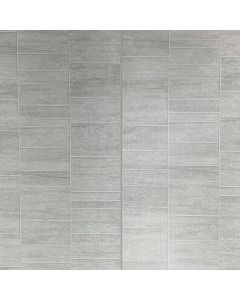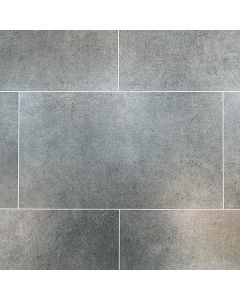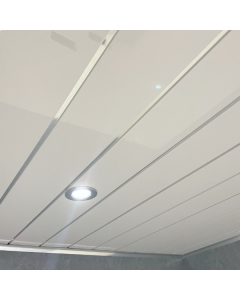
4 Types of Period Bathrooms
Period bathrooms have always been popular amongst homeowners, especially those who are lucky enough to have Georgian, Victorian, Edwardian or Art Deco properties. Key features like free-standing baths, wooden floors and separate showers make a period bathroom the ideal family bathroom, with design TV shows and even period dramas allowing their continued popularity.
In this blog we’ll discover four different types of period home, and how you can decorate and design your bathroom to make sure it’s in-keeping.
Georgian Period Bathroom (1714-1837)
At this stage in history, bathrooms were still outdoors, with even the wealthy trooping outside at all hours to use the outhouse. Chamber pots and washstands were popular and provided an opportunity for people to relieve themselves at night-time or wash before bed without having to heat water on the stove to fill a bath.
Georgian homes are known for their large, floor to ceiling sash windows, and high ceilings. Bathrooms in Georgian homes tend to be a converted bedroom, so unless restructuring has gone on, they are often very large – giving you plenty of space to play with when it comes to a redesign.
Creating a Georgian inspired bathroom at home
When decorating a Georgian bathroom, focus on elegant and curved lines through your choice of bathtub and furniture. Finding authentic antiques at flea markets or online can be great fun, and antique style burnished mirrors are also a great addition to the space. Create a wash-stand by replacing the top of a chest of drawers with polished stone, and add brass taps and a large round washbasin to complete the look.
In terms of colour scheme, muted tones are the most authentic. In the Georgian era, colours were limited, but duck-egg blues and pastel greens were popular, as was off-white. Add wood-effect bathroom wall panels behind the shower and bath to tie in with the rest of the décor.
For a more extravagant look, consider installing marble wall panels. Whilst they didn’t traditionally use marble in bathrooms in this era, marble complements the maximalist aesthetic with which the Georgians decorated. So, for a modernised twist, use marble!
Victorian Period Bathroom (1837-1901)
In the 1880s, wealthy homes soon had a dedicated space for washing, which became known as the bathroom. Victorian bathrooms were cold places, with white ceramic tiles, exposed pipework and enamel fixtures and fittings. Although upper class homes would almost certainly have had roll top enamel baths - and later, showers – working class people would still have had only one bath per week at most, sharing the same water as their family members in front of the stove in the kitchen. Access to clean water was not widespread, and the sewage system as we know it was only invented in 1866 by Joseph Bazalgette as a solution to the cholera epidemic.
Designing Victorian bathrooms at home
Taking elements from history is a great idea whilst decorating a bathroom for your Victorian home. Go for dark colours like charcoal grey or blue, to hint at your property’s heritage whilst also retaining some modernity. In the shower or bath area, using Subway Tile Bathroom Cladding is a great way to do this.
In terms of fixtures and accessories, swap out chrome for gold or brass-effect taps, and replace your plastic toilet seat with a wooden one. In terms of furniture, add a wooden plant stand and candles to turn your bathroom into welcoming Victorian paradise.
Edwardian Era (1901-1910)
By the time that the Edwardian era had swung around, the ostentatious aesthetic of the Victorian era had been replaced with something simpler. The arts and crafts movement was well underway, putting an emphasis on handmade, quality products after mass production created poor quality items.
Creating an Edwardian bathroom
When working with an Edwardian bathroom, not much will be different to if it was a Victorian bathroom. However, instead of darker colours for the walls, go for something crisp and spring-like that will enhance any natural light in the room. Off-white pink, light yellow and pale green are all good wall colours, and will be nicely complemented with these white-tile wall panels.
The bathroom was now an established room in many middle- or upper-class homes, so it started to take on less of a formal style.
Accessorise the bathroom with plant stands and lush green plants, wooden washstands and simple mirrors to allow light to flow around the room.
Art Deco (circa 1920 -1930s)
The Art Deco style is famous for its geometric and cubist shapes made from jewel tones and metal tones too. Thanks to the glamour of the age, there’s been a resurgence in interest in this style thanks to The Great Gatsby or Downton Abbey. Perhaps surprisingly, even in this era, many normal people still did not have indoor bathrooms. In larger homes that would have been owned by wealthier people, you may have a hint of gorgeous colourful ceramic tiling if you’re lucky – however, a lot of these original bathrooms would have been removed over the decades.
Creating an Art Deco bathroom at home
Monochrome was a huge feature in Art Deco styling, so consider learning more about how to implement it through our blog ‘How To Create A Modern Monochrome Bathroom’.
This style suits both large and small spaces, so choose the perfect accessories to really make your Art Deco bathroom come to life. Colour was all the rage in the Art Deco era, particularly in rich, deep jewel tones. Consider having bathroom wall paper with a geometric design, contrasted by some luxurious marble wall panels.
Chrome accessories will look great against frosted glass, and really evoke the glamour of the time. Bevelled mirrors look fantastic hanging on the wall and can be easily picked up at antique shops or online. Adding a pedestal basins, toilets and bathroom suites in a colour like light pink or green is a bold move, but one that could pay off massively.
Planning a period-style bathroom
Now that we’ve covered different eras for your bathroom, you probably have an idea of the vision that you want to execute. So, here are a few planning tips to allow your dream period bathroom to become a reality.
Baths
Baths are the focal point of every bathroom, and they can be a real make-or-break factor. For most period bathrooms, you can’t go wrong with a free-standing, roll topped tub.
For a Georgian or Victorian era theme, perhaps consider baths with ornate claw-feet at the bottom, as this is very indicative of the luxury of these eras. Baths that stand flat to the floor would work well in the slightly more modern Edwardian or Art Deco themes.
Additionally, for these later eras, consider a brass soaking tub. These look really chic compared to the moodier furnishings of these periods, and will provide a lovely contrast to any darker colours you use.
Showers
Having a period bathroom doesn’t mean replicating an exact bathroom from the era you’ve chosen. So, feel free to incorporate any kind of shower that you’d like.
You can have a shower over the tub if you’re short on space, or even as a separate enclosure. A great way to give a shower a more vintage feel is to use a black-framed glass enclosure to separate it. This looks trendy and classic – just be sure to install waterproof wall panels in your enclosure to prevent the growth of mould.
Flooring
Again, it might be tempting to assume you need traditional flooring to make your period bathroom pop. However, waterproof wooden floor panels can be just as effective.
A bathroom floor needs to be practical first, and stylish second. Waterproof panels aren’t as slippery as tiles, and don’t absorb water like traditional wood does. Therefore, you can enhance any period theme you choose with a simple wood effect panel.





























